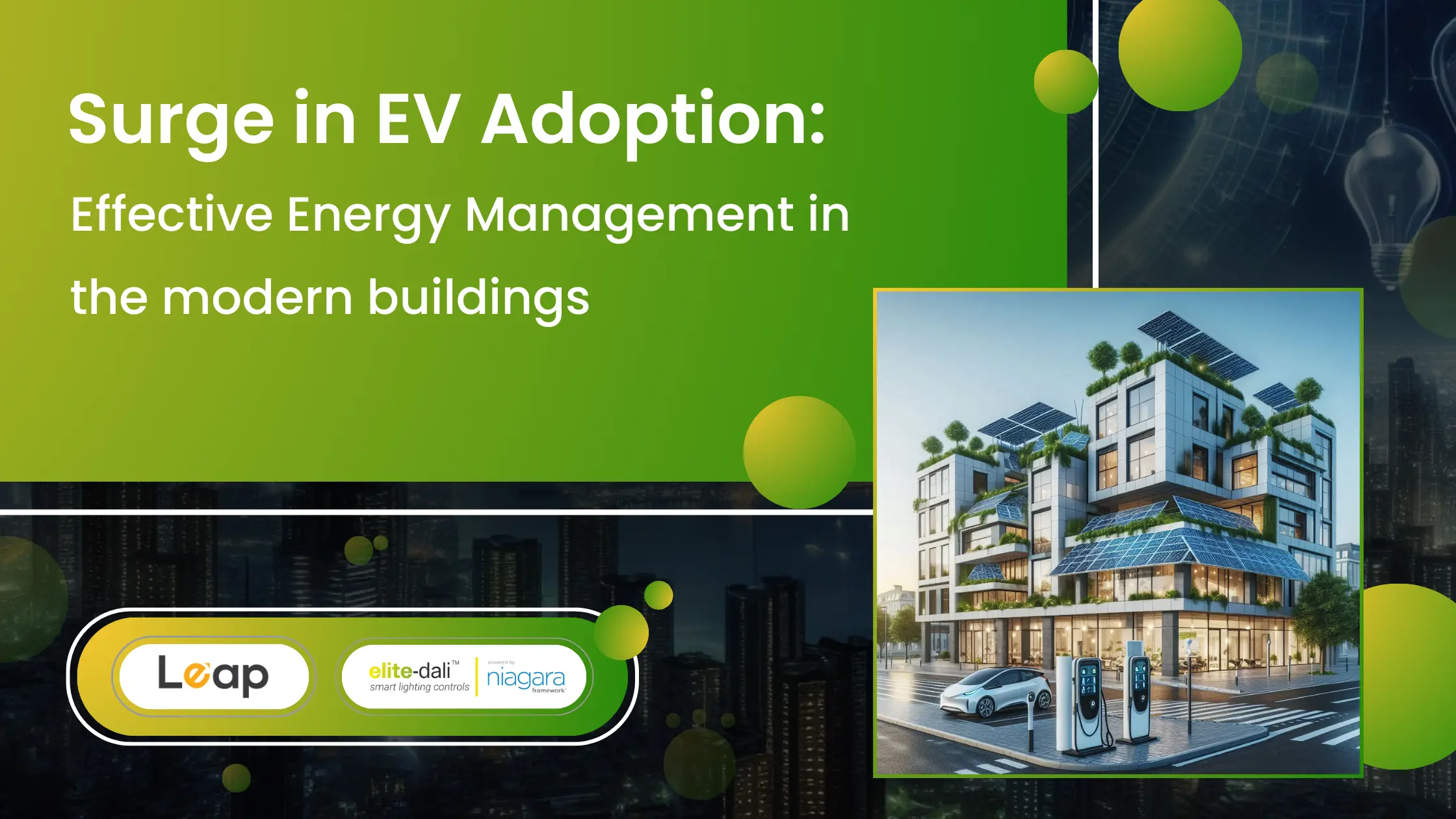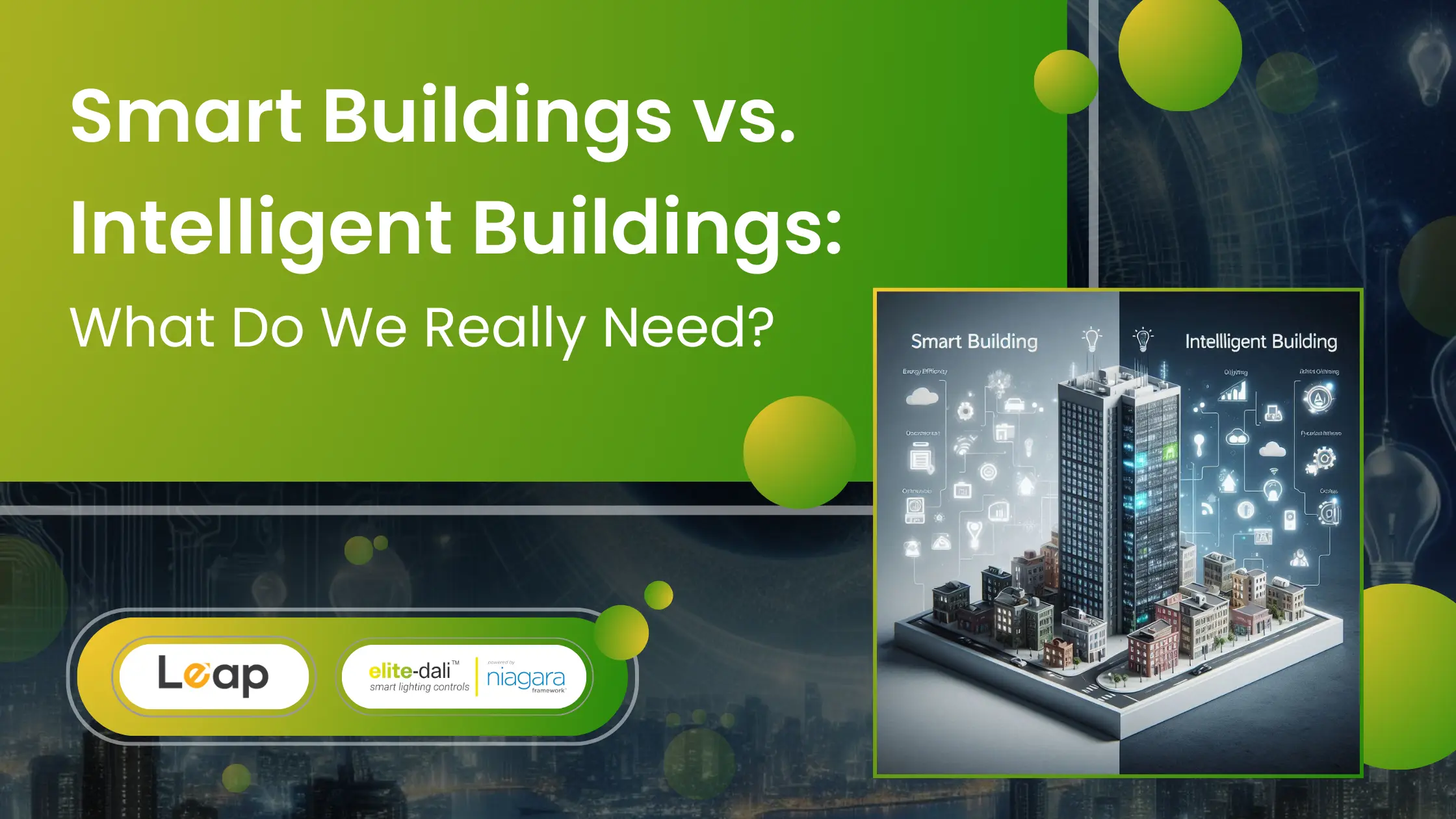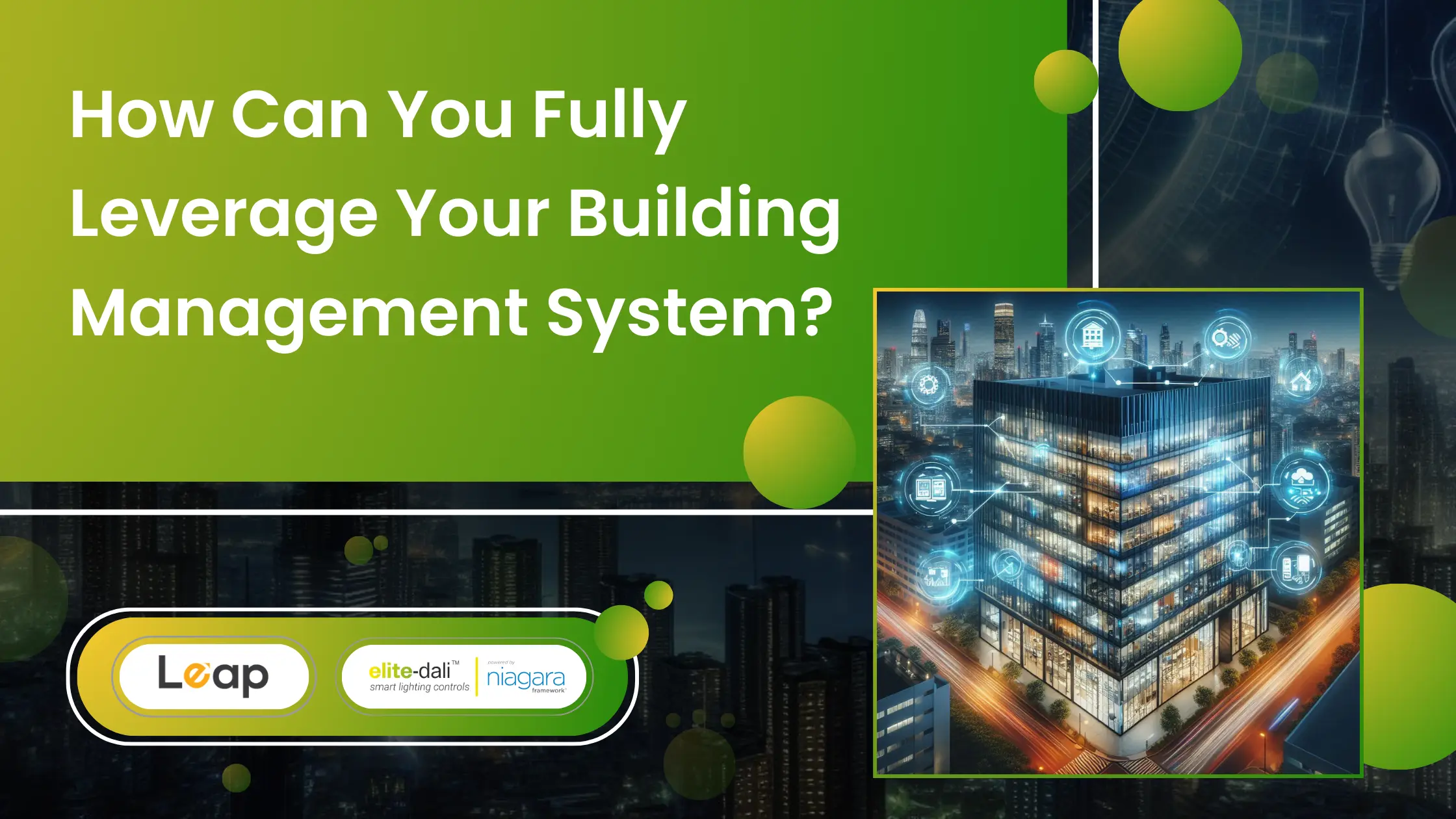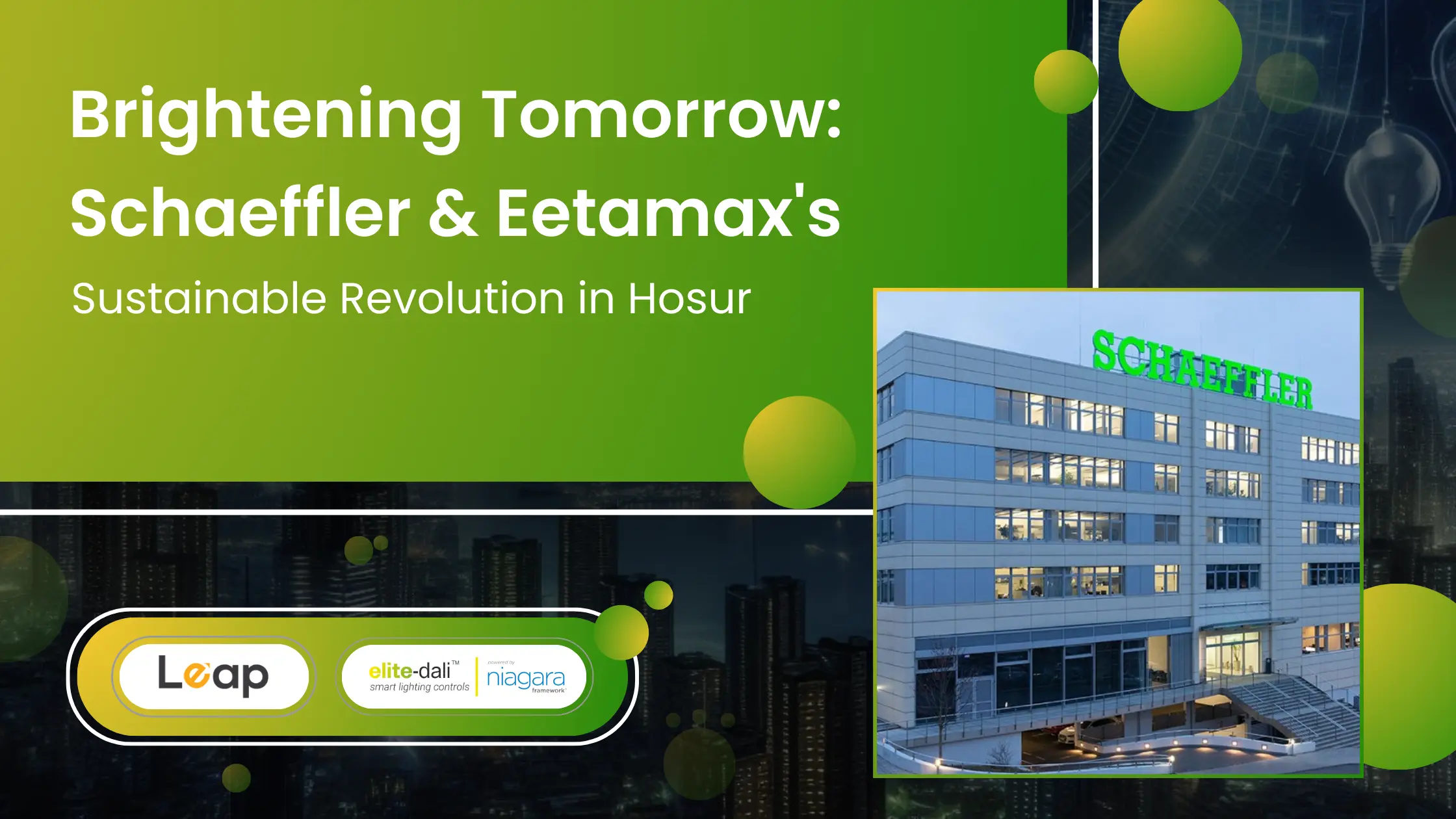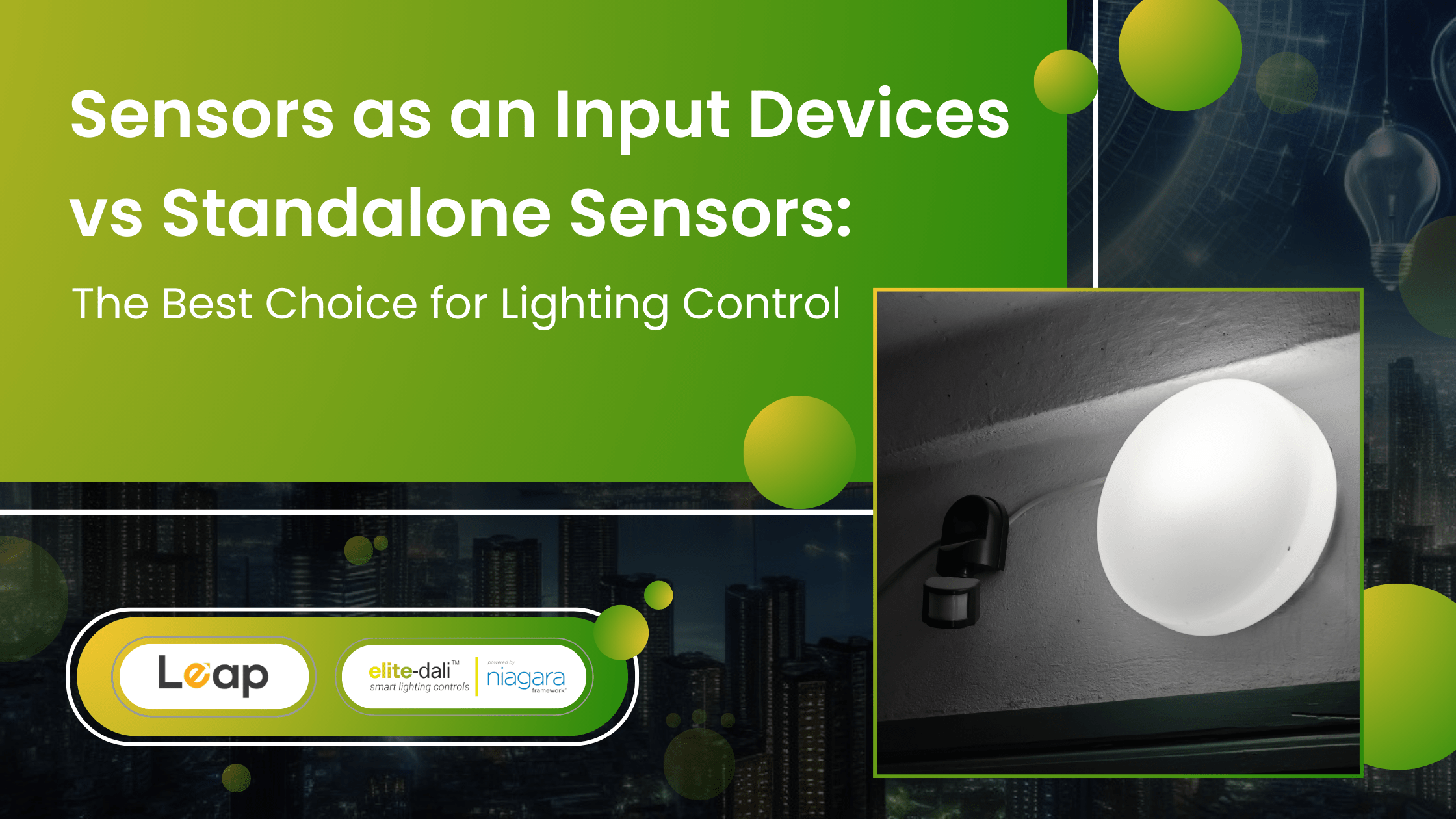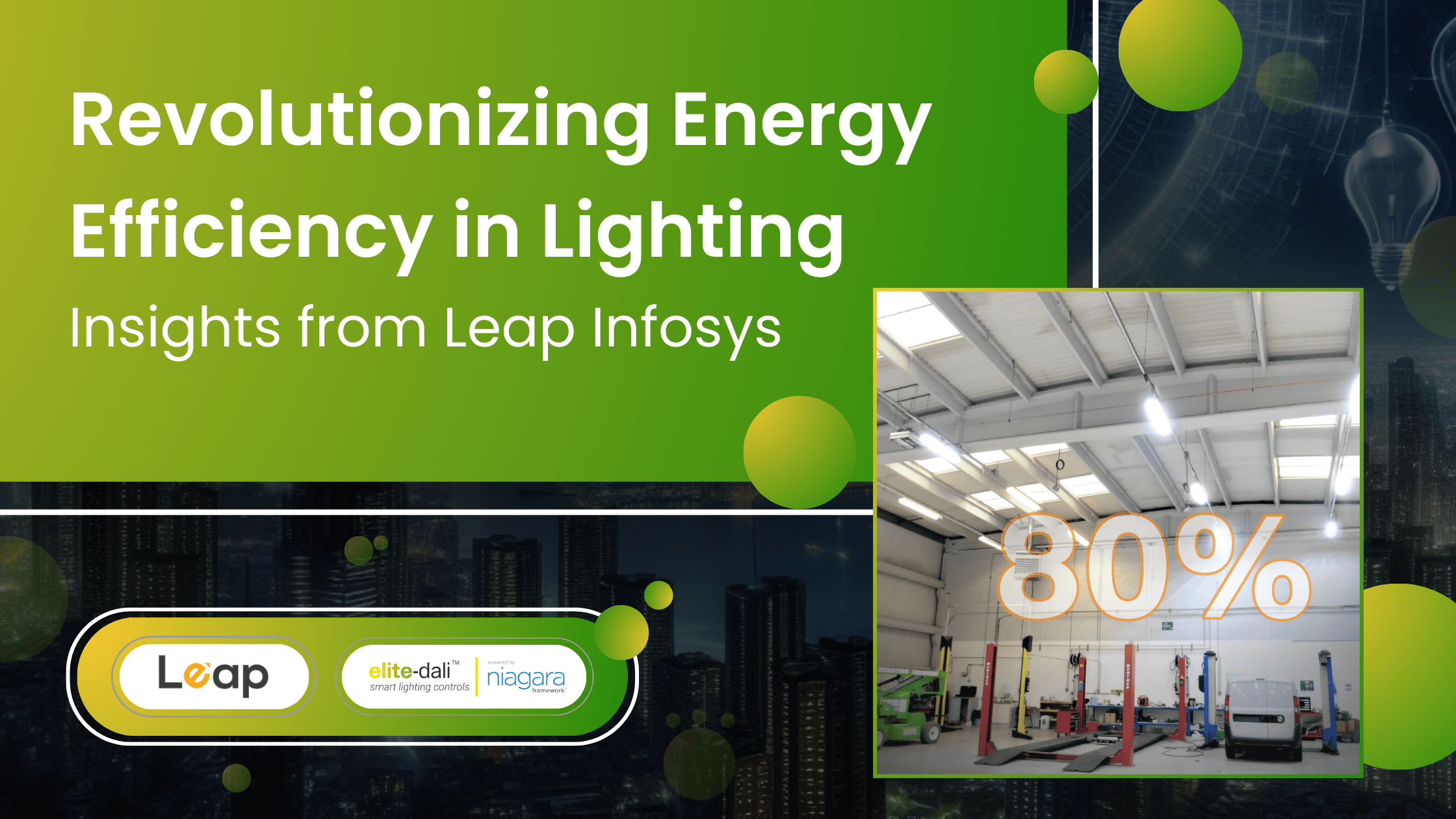Surge in EV Adoption: Effective Energy Management in the Modern Buildings
The burgeoning popularity of electric vehicles (EVs) is heralding a new era of sustainable transportation. Offices, commercial facilities, public spaces and residential complexes are increasingly installing EV charging stations to accommodate this shift. While this move is environmentally commendable, it also poses significant challenges for existing electrical infrastructures due to increased energy demands.
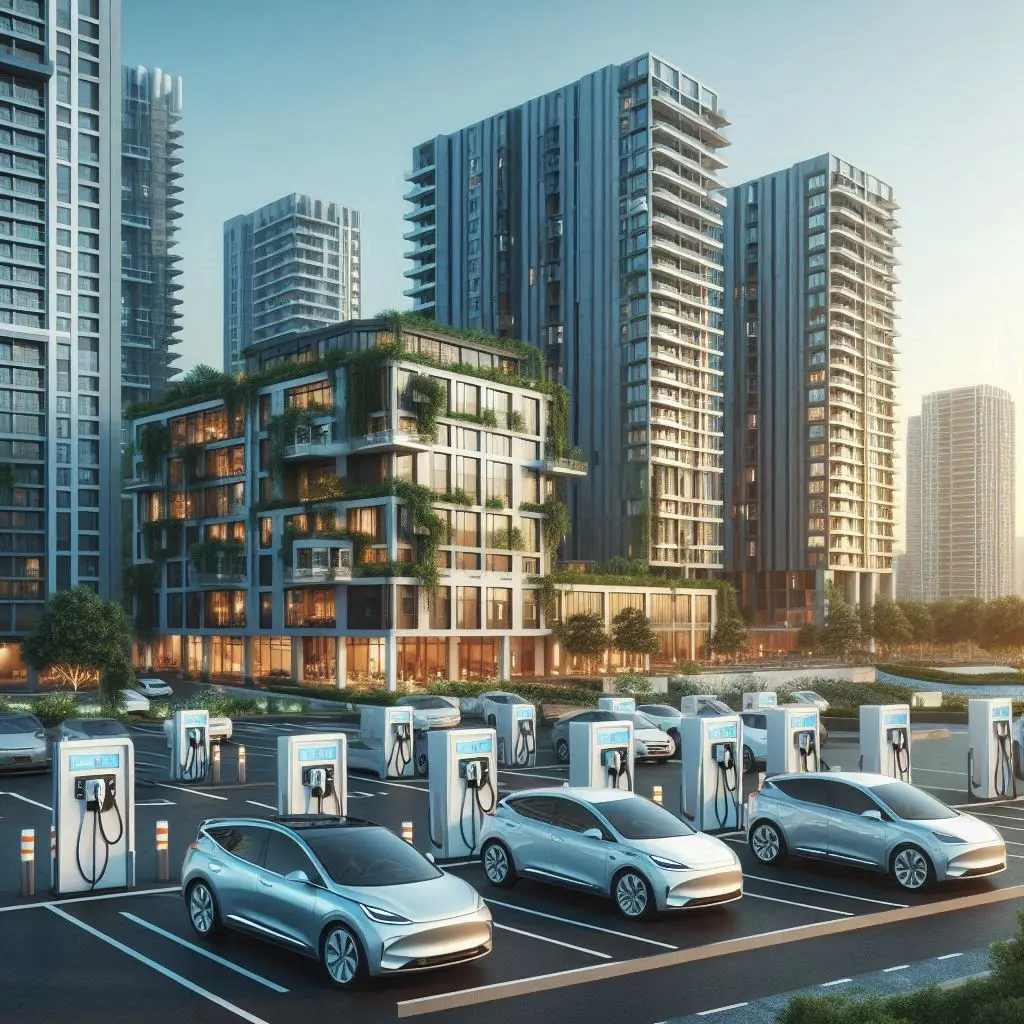
Beyond a simple solution like purchasing more and more energy, Smart Building and Lighting Management Systems or referred as Smart Building Automation Solutions can play a pivotal role in managing and optimizing these new energy loads. Here’s how innovative management systems and additional strategies are making a difference:

1. Dynamic HVAC Tuning
Smart Building Automation Solutions can finely tune HVAC operations based on real-time data like weather changes, occupancy, and peak hours. For instance, in Bangalore, Infosys’s campus utilizes a smart HVAC system that reacts dynamically to weather conditions, reducing energy usage by about 30% compared to traditional systems.
Example:
Infosys has implemented variable frequency drives (VFDs) to its HVAC systems, which adjust motor speeds based on actual air conditioning needs, further enhancing energy efficiency.
2. Intelligent Lighting Controls
Tata Motors in Pune leverages adaptive lighting that adjusts the artificial light intensity based on the natural sunlight available, which has led to a 40% reduction in lighting costs. This smart system ensures that energy is used efficiently throughout the day.
Example:
In less frequented areas of their facility, TATA Motors has installed intelligent lighting controls that activate lighting only when human presence is detected, minimizing energy wastage.
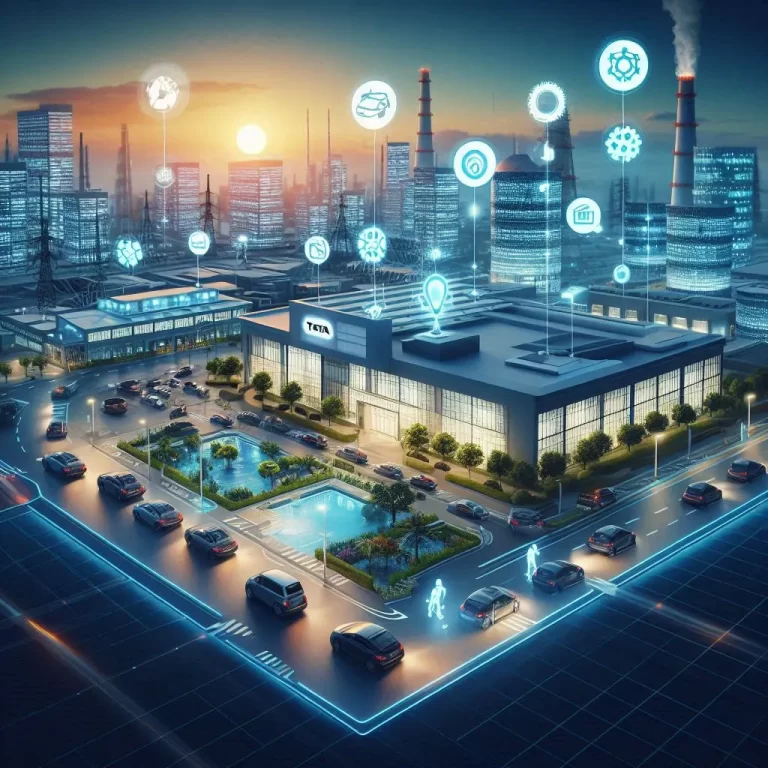
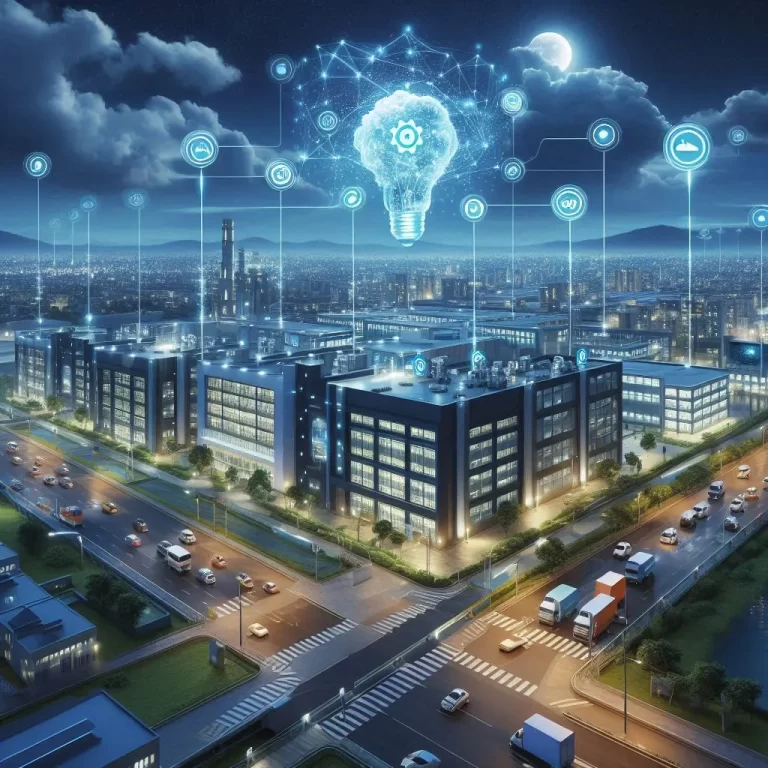
3. Smart Scheduling for Peak Load Management
At Wipro’s Hyderabad campus, non-urgent high-power tasks, including EV charging, are scheduled during off-peak hours. This smart scheduling not only balances the energy load throughout the day but also capitalizes on lower energy rates during these times, recording a 25% increase in EV charging capacity.
Example:
Wipro uses software algorithms to predict peak usage times and pre-cool the building overnight. This reduces the air conditioning load during the daytime peak hours, thereby saving significant energy.
4. Predictive Analytics for Enhanced Efficiency
Reliance Industries in Mumbai uses predictive analytics to foresee periods of high energy demand. This foresight allows for preemptive adjustments in energy use, slashing peak energy demands by up to 20%.
Example:
By incorporating machine learning into their predictive systems, Reliance has further refined their energy management, allowing for more precise adjustments that cater to actual building usage patterns.

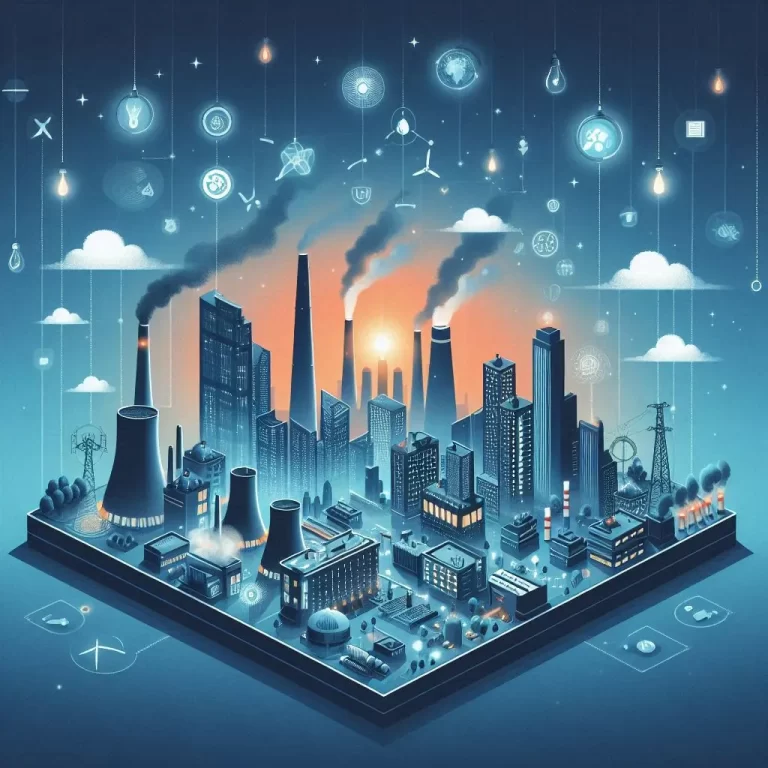
5. Utilization of Energy Storage Systems
Mahindra Tech Park in Pune employs energy storage systems that accumulate energy during low-demand periods for use during peak times. This not only ensures a steady energy supply for essential services like EV charging but also alleviates the load on the local grid.
Example:
Mahindra has also explored the use of phase-change materials in building structures to store thermal energy, which is used to reduce the cooling load during peak hours.
6. Occupancy-Based Optimization
The Godrej One building in Mumbai uses occupancy sensors to minimize energy wastage, leading to a 45% reduction in energy usage. These sensors ensure that energy expenditure is directly proportional to the usage and occupancy of the space.
Example:
Advanced analytics systems in Godrej One predict usage patterns and dynamically adjust HVAC and lighting, ensuring energy is only used when and where it’s needed.
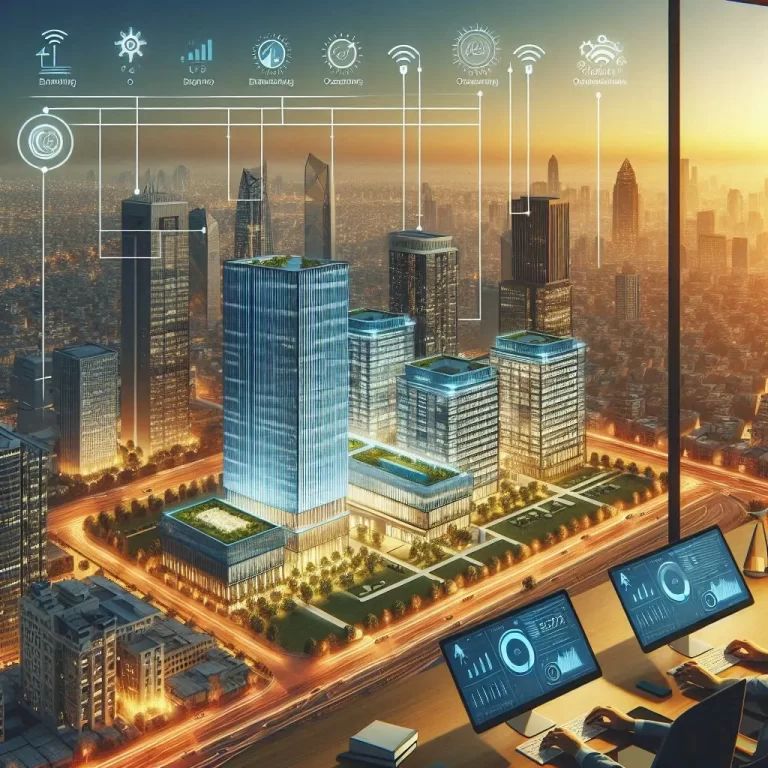

Conclusion:
As the shift towards electric vehicles (EVs) gains momentum in India, it’s imperative that our buildings and infrastructures adapt to manage the increased energy demand smartly. Through the integration of Building and Lighting Management Systems, and by employing additional innovative energy-saving strategies, large office spaces and housing societies can significantly enhance their energy efficiency. These solutions not only support the sustainable adoption of EVs but also foster an environment of conscious energy consumption and operational efficiency.


